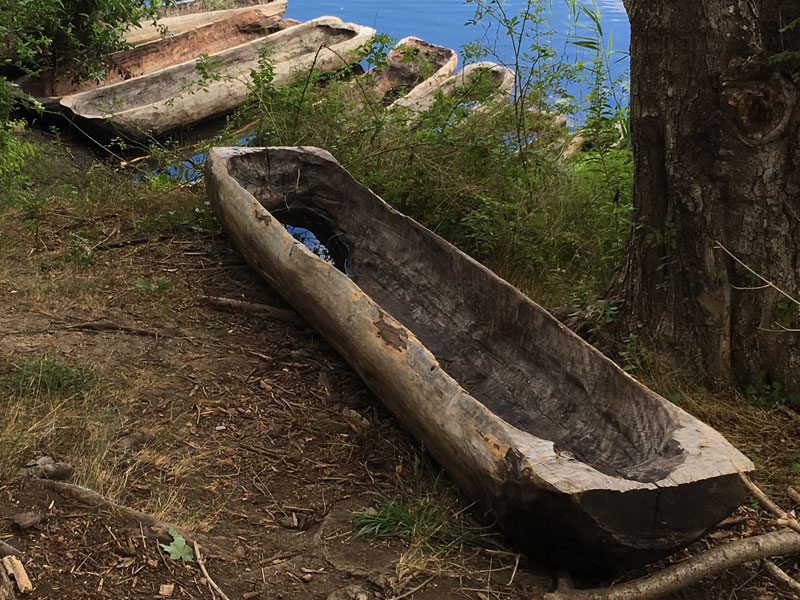
The Contact Period: 1492-1600
Teaching ourselves about Native American history on Cape Cod
The Contact Era in Native American history can be traced beyond Christopher Columbus's four voyages to the "New World" from the "Old World" to about 1600 CE. After 1600, Europeans continued active settlement in North America; the Spanish already colonized parts of North, Central and South America as well as the Caribbean. The Contact Period can be divided into four discrete periods:
-
Prelude: This period included the Viking exploration of the 7th century and attempted settlement of today's Newfoundland and Labrador Province in Canada. Some argue that Irish cleric Saint Brendan the Navigator sailed to North America in the 6th century although there is no scholarly evidence that occurred.
-
Exploration: The period of exploration could be described as accidental and momentary contacts between explorers and Natives. The experiences of explorers--and the Native Americans--led to new perceptions of North and South America's east coast. In other words, descriptions of the "New World" fueled new voyages, soaked competition between powers for new voyages, and led to speculators vying for the vast, untapped resources such as timber, fishing, metals and animal pelts.
-
Gathering: This period can be described as casual seasonal contact, mostly along the Eastern Seaboard and the Canadian Maritimes. The gathering of the fisherman and mariners had little impact on Native populations but marked a period of extensive routine activities, mostly around seasonal fishing.
-
Barter and Plunder: This period marked the most significant change to the Native Americans as face-to-face interactions led to the transmission of disease, the beginning of conflicts, and to the planning of permanent European settlements. Although contact was sporadic and intermittent during this period, the impact was shallow and limited to the Northeast and the Canadian Maritimes. The English, French and Dutch were testing new markets
Below is a time line of exploration and contact
1492-1504: Christopher Columbus's four voyages to the Americas
1497: John Cabot (Italian) explored the Labrador coast
1513: Ponce De Leon explores Bahamas, Caribbean, Florida
1524: Giovanni Verrazano explores the east coast. He wrote about cultivated fields at Narragansett Bay
1527-1528: Ponfilo Narvaez explores Texas coast. He is killed in a shipwreck but crew makes it to Mexico
1534: Jacques Cartier explores the Gulf of St. Lawrence
1535-1536: Cartier explores the St. Lawrence River to the site of today's Montreal, Quebec, Canada
1539-1542: Hernan DeSoto explores Florida and the Gulf of Mexico, the interior of the American southeast, and the lower Mississippi Valley
1540-1542: Francisco Coronado explores the Northern Mexico and the American Southwest
1543: Juan Cabrillo explores the American west coast
1576-1578: Martin Frobisher makes three trips to northern Martime Canada
1577: Francis Drake maps most of the Pacific coast
1583: Humphrey Gilbert explores Newfoundland
1585: Roanoke (North Carolina) expedition
1585-86: John Davis explores Labrador
1607: Jamestown is settled by the joint-stock business, The Virginia Company. Despite more-than-a-decade of death, violence and disease, the settlement succeeds. Eventually, it became a royal colony, England's first in North America
1608: Englishman Henry Hudson, sailing on behalf of the Dutch West India Company, explores the mid-Atlantic, New England, and the Canadian Maritimes
1610: Henry Hudson, sailing for the English, explores what would became known as Hudson's Bay
1620: Religious dissenters land at Provincetown, Cape Cod, and later settle at an abandoned Wampanoag village called Pawtuxet. They would rename it Plimoth (Plymouth Plantation)
1624: Dutch establish trading enterprise on Manhattan Island
1638: Swedish establish Novo Sverge (New Sweden) in southern New Jersey and Delaware
Source: "North America in 1700 - Mapping History." https://mappinghistory.uoregon.edu/english/US/US02-03.html. Accessed 1 Feb. 2022.